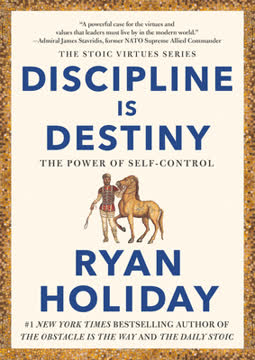Key Takeaways
1. Embrace the Digital Age: Adapt Your Communication Style
"Digital technology is rewiring our brains and reshaping how we communicate."
Shift in communication paradigm. The digital revolution has fundamentally changed how we consume and process information. Our brains are adapting to shorter, more visual, and interactive forms of content. This shift requires communicators to:
- Embrace multimedia elements (video, audio, graphics)
- Create more digestible, scannable content
- Develop nonlinear, interactive experiences
Balance old and new. While adapting to digital formats, it's crucial to maintain the essence of effective communication. Combine time-tested techniques with new digital tools to:
- Deliver clear, concise messages
- Engage audiences emotionally and intellectually
- Provide meaningful, valuable content in any format
2. Know Your Audience: Tailor Your Message Effectively
"The more information you have about your audience, the greater your chances are for successfully reaching them with a meaningful message."
Research is crucial. Understanding your audience allows you to craft messages that resonate. Utilize various methods to gather insights:
- Conduct surveys and interviews
- Analyze social media and online behavior
- Use data analytics tools
Adapt to diverse groups. Different audiences require different approaches. Consider:
- Educational and professional backgrounds
- Cultural context and sensitivities
- Specific needs and interests
Tailor your content, tone, and delivery method to match your audience's preferences and expectations. This audience-centric approach significantly increases the effectiveness of your communication.
3. Master Your Subject: Be Prepared and Confident
"If you can't explain it simply, you don't understand it well enough." - Albert Einstein
Deep understanding is essential. To communicate complex ideas effectively, you must first have a comprehensive grasp of the subject. This requires:
- Thorough research and preparation
- Ability to explain concepts at various levels of complexity
- Confidence in addressing questions and challenges
Strategic use of knowledge. While mastery is crucial, it's equally important to know how to deploy that knowledge effectively:
- Identify key points that will resonate with your audience
- Anticipate questions and potential areas of confusion
- Be prepared to simplify or elaborate as needed
Mastering your subject allows you to communicate with authority and flexibility, adapting your message to the needs and understanding of your audience.
4. Simplify Without Oversimplifying: Find the Right Balance
"Everything should be made as simple as possible, but not simpler." - Albert Einstein
Clarity is key. Effective communication often requires distilling complex ideas into simpler, more digestible forms. However, there's a fine line between simplification and oversimplification. Aim to:
- Break down complex concepts into understandable parts
- Use clear, concise language
- Avoid jargon and unnecessary technical terms
Maintain integrity. While simplifying, ensure that you don't lose the essence or accuracy of the information:
- Identify core concepts that must be preserved
- Provide context and background when necessary
- Use analogies and examples to illustrate complex ideas
Striking the right balance allows you to make your message accessible without sacrificing depth or accuracy.
5. Speak Human: Humanize Your Content for Better Engagement
"Be genuine. Open up and let the real you emerge."
Connect on a personal level. Humanizing your communication helps create a stronger connection with your audience. This involves:
- Using a conversational tone
- Sharing personal experiences and anecdotes
- Showing empathy and understanding
Find your authentic voice. Develop a communication style that reflects your personality while maintaining professionalism:
- Write in first person when appropriate
- Use humor judiciously
- Be transparent about your perspectives and experiences
Humanizing your content makes it more relatable and memorable, increasing the likelihood that your message will resonate with your audience.
6. Tell Stories: Use Narratives to Explain Complex Ideas
"Stories make ideas real—they give our brain something to latch on to that helps us put foreign concepts into a context we can relate to."
Harness the power of narrative. Stories are a powerful tool for making complex ideas more accessible and engaging. They help by:
- Creating emotional connections
- Providing relatable contexts for abstract concepts
- Enhancing memory and recall
Craft effective stories. To use storytelling effectively in your communication:
- Identify key messages that can be illustrated through narrative
- Develop characters and situations your audience can relate to
- Use a clear structure (e.g., beginning, middle, end)
- Ensure the story supports and enhances your main points
Incorporating storytelling into your communication can significantly improve understanding and retention of complex information.
7. Make It Relevant: Help Your Audience Care About Your Message
"To get an audience to care, find something that interests them, then link it back to the subject of discussion."
Establish personal connection. For information to resonate, your audience needs to see its relevance to their lives or work. Strategies include:
- Highlighting direct benefits or impacts
- Relating the topic to current events or trends
- Addressing potential concerns or questions
Use the "what this means to you" approach. Frame your message in terms of its significance to your audience:
- Clearly articulate the implications or applications
- Provide concrete examples of how the information can be used
- Encourage the audience to consider personal connections to the topic
By making your content relevant, you increase engagement and the likelihood that your message will be remembered and acted upon.
8. Use Analogies and Layering: Build Understanding Step-by-Step
"Analogies are the figures of speech that lead to the 'aha' moments of simple epiphany."
Leverage familiar concepts. Analogies help bridge the gap between known and unknown ideas:
- Choose comparisons relevant to your audience
- Ensure the analogy accurately represents the concept
- Use multiple analogies for complex ideas
Build knowledge incrementally. Layering information allows for gradual understanding:
- Start with basic concepts
- Progressively introduce more complex ideas
- Reinforce connections between new and previous information
These techniques help audiences grasp difficult concepts by relating them to familiar ideas and building understanding over time.
9. Harness the Power of Visuals: Enhance Comprehension with Multimedia
"Vision is our most dominant sense."
Incorporate visual elements. Visual aids significantly enhance understanding and retention:
- Use infographics to simplify complex data
- Incorporate relevant images and diagrams
- Create video content for dynamic explanations
Design with purpose. Effective visuals should:
- Complement and enhance your message
- Be clear and easy to interpret
- Avoid unnecessary clutter or decoration
Thoughtful use of visuals can make your communication more engaging, memorable, and effective in conveying complex information.
10. Create Interactive Experiences: Engage Your Audience Actively
"People don't want to sit back idly reading, listening, and watching—they want to participate."
Encourage active engagement. Interactive elements can significantly enhance learning and retention:
- Develop hands-on demonstrations or experiments
- Create digital simulations or games
- Incorporate Q&A sessions or discussions
Balance interaction and information. Ensure that interactive elements:
- Support and reinforce your key messages
- Are accessible and user-friendly
- Provide meaningful feedback or insights
By involving your audience actively in the learning process, you can increase engagement and improve understanding of complex topics.
11. Become a Supercommunicator: Lead in the Digital Era
"Supercommunicators make sense of an increasingly complicated world."
Develop a comprehensive skill set. Supercommunicators combine:
- Strong traditional communication skills
- Proficiency with digital tools and platforms
- Ability to adapt to evolving communication landscapes
Lead collaborative efforts. In complex projects:
- Coordinate diverse teams (designers, developers, subject experts)
- Ensure cohesive messaging across various media
- Maintain focus on delivering meaningful content
By mastering both traditional and digital communication skills, supercommunicators can effectively navigate and lead in our increasingly complex information environment.
Last updated:
Review Summary
Supercommunicator receives mixed reviews, with an average rating of 3.38 out of 5. Some readers find it basic and outdated, while others appreciate its engaging writing style and practical tips for effective communication. Positive reviews highlight the book's insights on simplifying complex information and adapting to modern communication challenges. Critics argue that the content lacks originality and depth for those familiar with the subject. Overall, readers value the book's emphasis on audience understanding, simplification, and effective use of multimedia, but opinions vary on its uniqueness and applicability.
Similar Books









Download PDF
Download EPUB
.epub digital book format is ideal for reading ebooks on phones, tablets, and e-readers.




